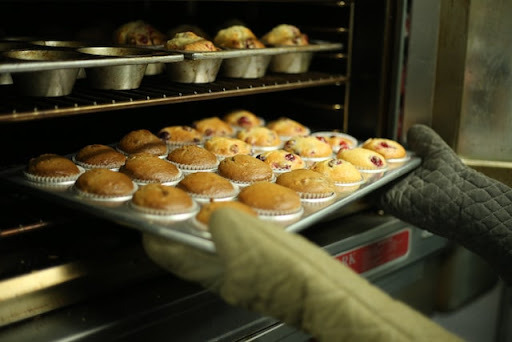Did you know that making a cake from scratch is a walk in the park? Here are ten baking strategies for making a great cake from scratch. A recipe and step-by-step instructions are also given to help you along the way.
Get your ingredients ready
Before you begin mixing, always place all of your ingredients on the table. You won’t forget anything this way. And you won’t over- or under-mix components while searching for something. Follow the instructions in the recipe. There is a reason why a recipe instructs you to preheat the oven, prepare your baking pans, and so on. This allows you just enough time to do things like preheating, measuring, sifting, creaming, and so on. Use Carrefour Discount Code and NowNow Discount Code to get amazing discounts on your orders.
Measure your ingredients
Always measure your ingredients precisely. And the best method to do it is to utilize weight measurements rather than volume measurements. If a recipe calls for one cup of something, use that amount, not a few tablespoons more or less. It makes a significant difference.
A few tablespoons of excess flour can make your cake dense and crack on top. While a few teaspoons may result in the cake sinking. Also, if we scooped a cup of flour, they wouldn’t be the same weight. So, rather than volume, the best way to verify you have the correct amount is by weight.
Maintain the temperature
Most people are unaware of how important this is in baking. Not only with cakes, but with pastry, bread, and other baked foods as well. Nonetheless, it is vital to cakes. A recipe calls for room-temperature ingredients for a reason.
Butter: If the butter is not at room temperature, it will not cream well and will remain lumpy. And it won’t become light and fluffy if it won’t cream.
Eggs: Begin at room temperature. This will ensure that they blend nicely with the rest of the ingredients and that the batter does not curdle.
Sugar: Finer or smaller grain sugar will cream well. Because coarse granulated sugar takes longer to cream and ends up remaining gritty or overheating the butter.
Most standard cakes have a simple formula:
- Cream the butter and sugar together – when this is done, it will look light, fluffy, and creamy. (This usually takes 2 to 3 minutes.) When the butter is overmixed, it becomes softer and soupy rather than creamy.
- Add the eggs one at a time, incorporating each one thoroughly. That is, add each egg at approximately 20-second intervals, combining the first until no yellow is apparent. Then add the following one, and so on.
It is critical to thoroughly combine the eggs since this will give your completed cake the light and airy quality we all crave. Overmixing causes the batter to curdle or separate.
- Adding the dry and wet components – Always start with the dry and end with the dry (dry/wet – dry/wet-dry). It is critical to combine them until they are entirely incorporated. However, we do not want to overmix here. Overmixing activates the gluten in the flour, making the cake thick (sometimes chewy).
- Get your cake pans ready-Nothing is more frustrating than a cake that has become stuck to the pan. Is there one? All that effort! But how should you prepare your pans?
- You can buy a baking spray that is a blend of flour and oil. The simplest method, of course, is to brush the pan with butter and coat it with flour. Shake the pan to ensure that the flour coated the entire surface, then shake the pan over the sink to remove any excess flour. It is critical to tap off any extra flour, as it can damage the texture of the cake’s crumb.
- The general rule is to oil the pan and line the bottom with parchment paper.
- Furthermore, always fill the pan 2/3 full, giving room for the cake to rise.
Check the oven temperature
When baking, the temperature of the oven is critical and can affect the final outcome of your baked items. An oven thermometer is an excellent investment. Having said that, if you don’t have one, keep an eye on your oven.
Furthermore, when the cake is almost done, the aroma from the oven is a fantastic indicator.
Toothpick test
Insert a toothpick or cocktail stick into the cake and remove it. If the toothpick comes out clean with no cake batter and no moisture is detected, the cake is done. If not, wait a few minutes and then try again.
The bounce-back test
Another sign that a cake is finished is when it bounces back. That is, if you press the top of the cake, it will bounce back up. While this is a good indicator, it should only be used as a backup technique of testing and not as the primary approach.
Cool the cake
Remove the cake from the pan and place it on a cooling rack to cool fully. This should be a simple task if your pans have been properly prepped.

